
H E L I O S


H E L I O S
SCOPE Hospice care is integral to the U.S. healthcare system, and has evolved significantly over time. Well-designed facilities are central to providing quality end-of-life care. A supportive care environment can be defined as one that holistically aims to meet the needs of the various users of the space.
Several studied design interventions to address these needs include:
-Integration of biophilic design strategies and lighting considerations
-Controllability of both electric and daylight sources
-Intentional layout that supports connection
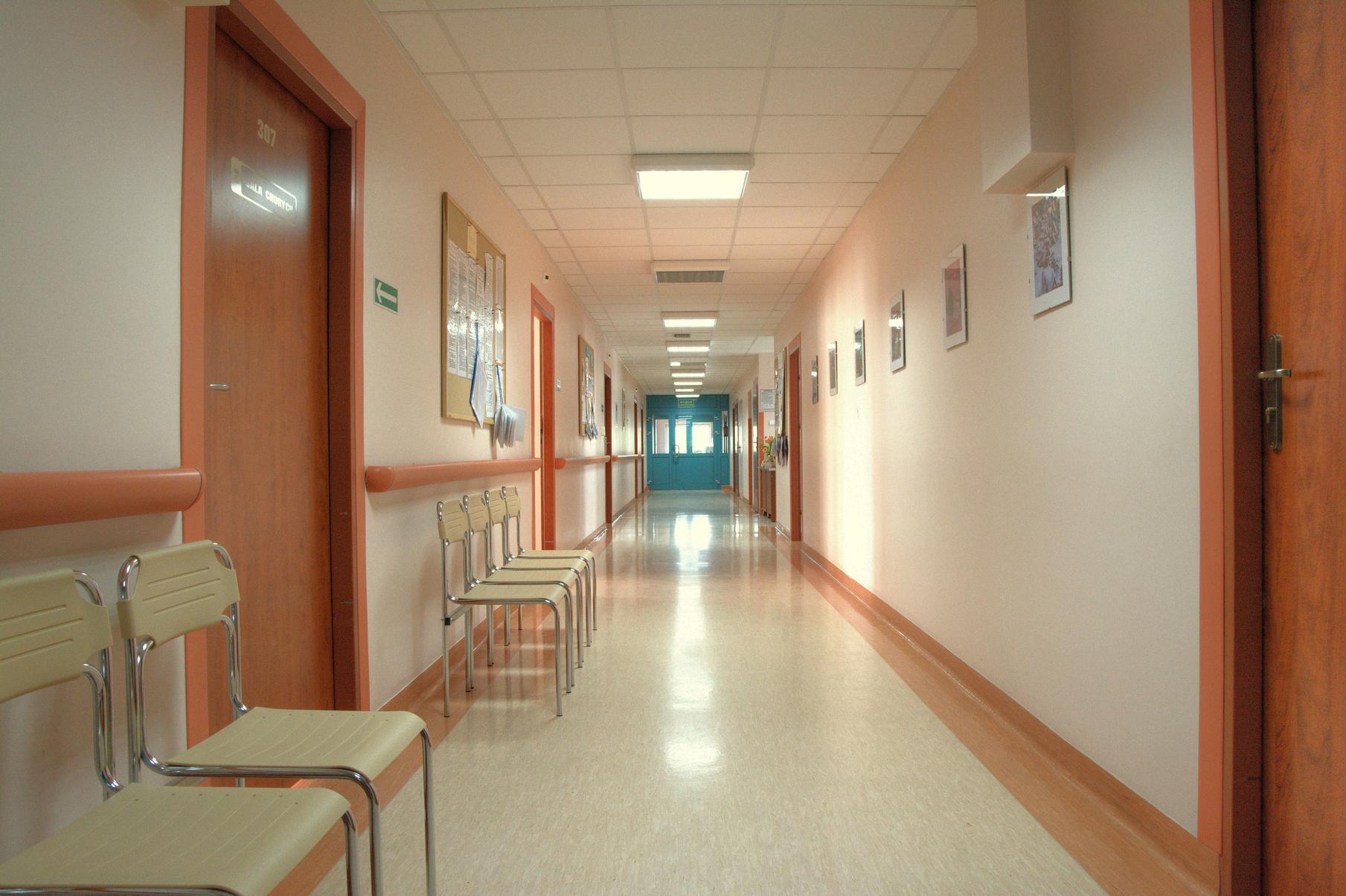
Design solutions that target the needs of the three primary users include layered lighting, accessible controls, daylighting, a facilitated & customizable layout, clear & discreet sight lines, and dimming
Accessibility
Customizability/Ambiance
Glare Control
Hygienic environment
Integration of nature
Privacy
Quality time with visitors
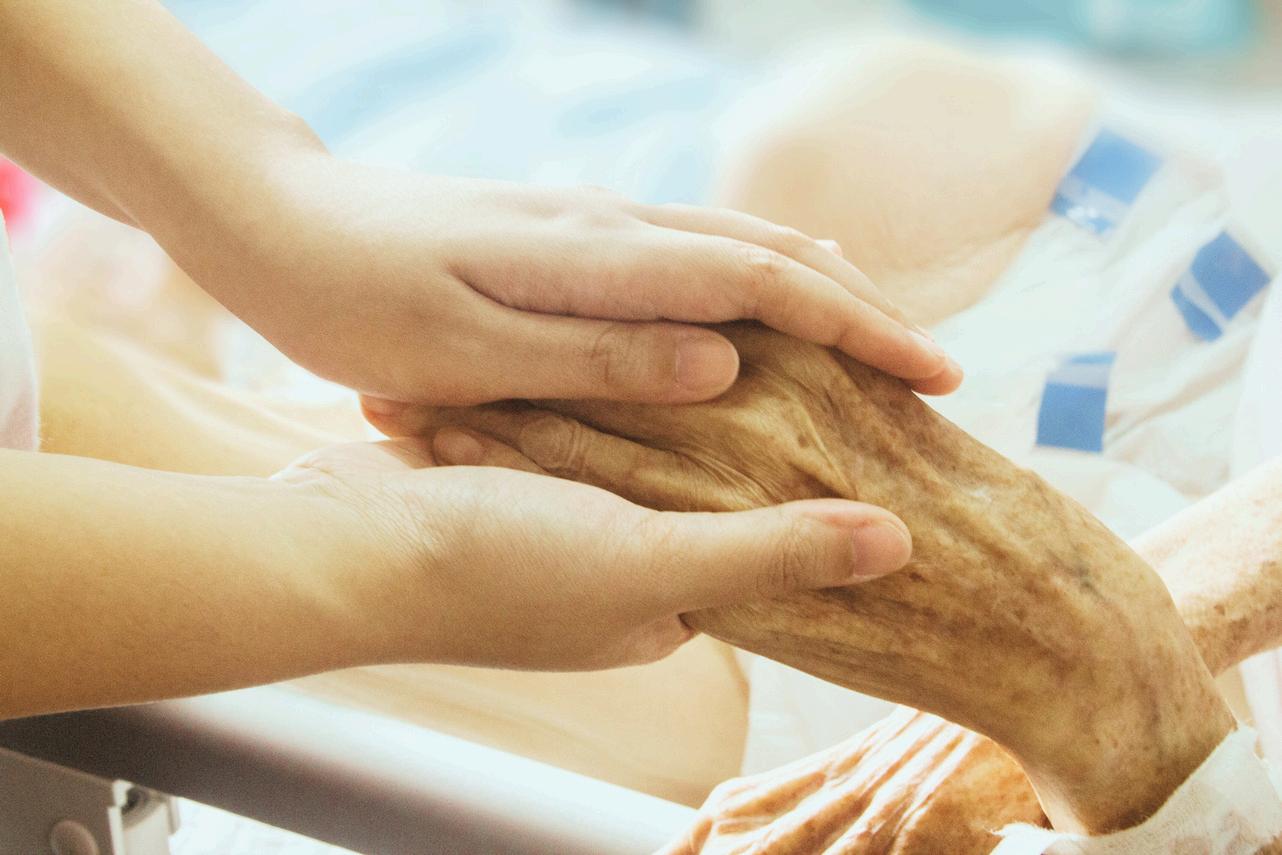
Physical proximity with patient
Communication
Integration of nature
Privacy
Quality time with patient & family
Controls
Adequate task lighting
Communication
Glare Control
Hygienic environment
Integration of nature
Circadian support
Controls



Helios. / (ˈhiːlɪˌɒs) / noun.
Greek, translates to “sun”
Greek mythology: Helios, the god of the sun, drove his chariot daily across the sky to provide light. He was closely associated with the study of the movement of the sun.
Greek culture: the word has spiritual connotations pertaining to the unique healing connection humans have to the sun & their environment





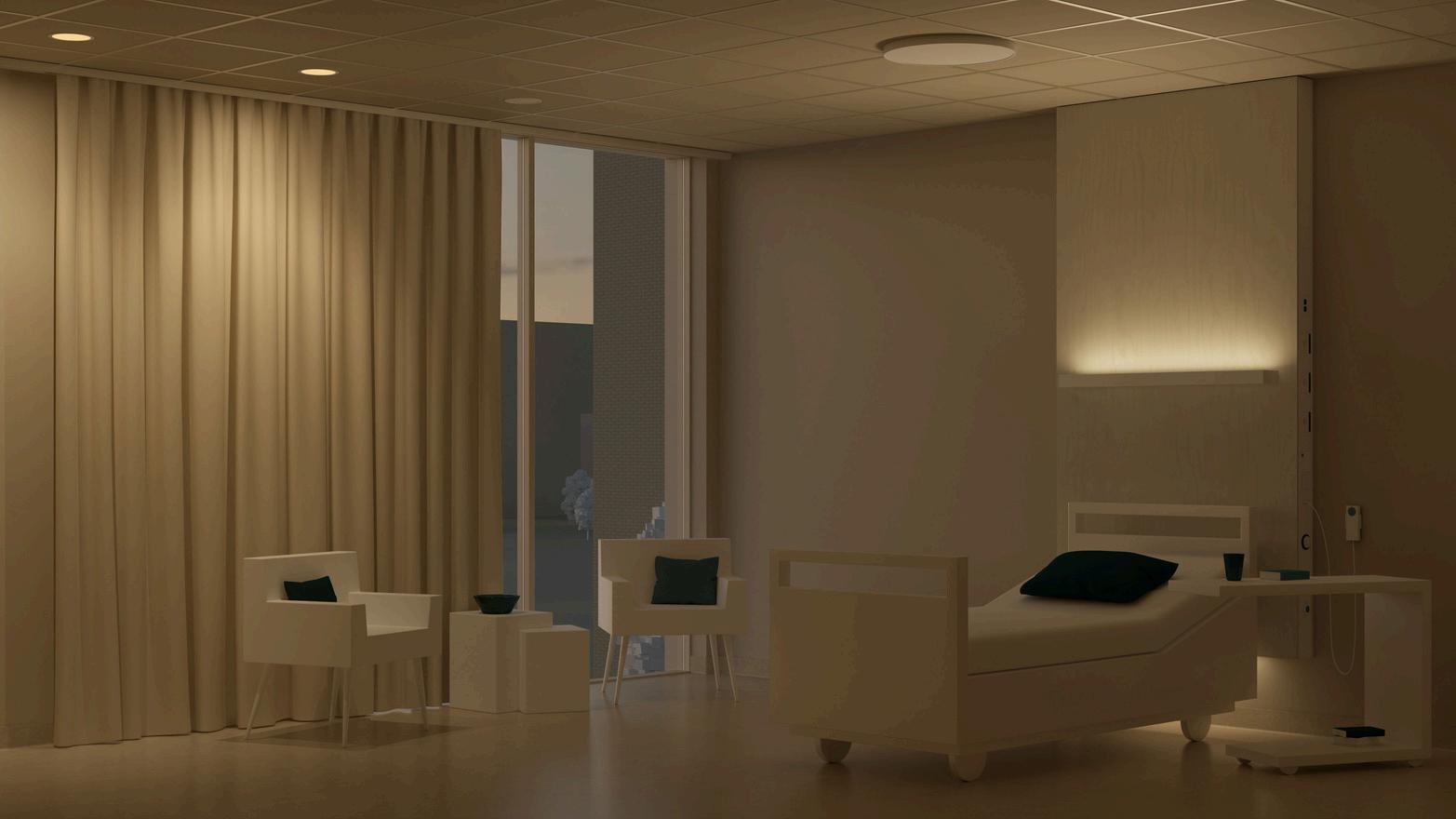

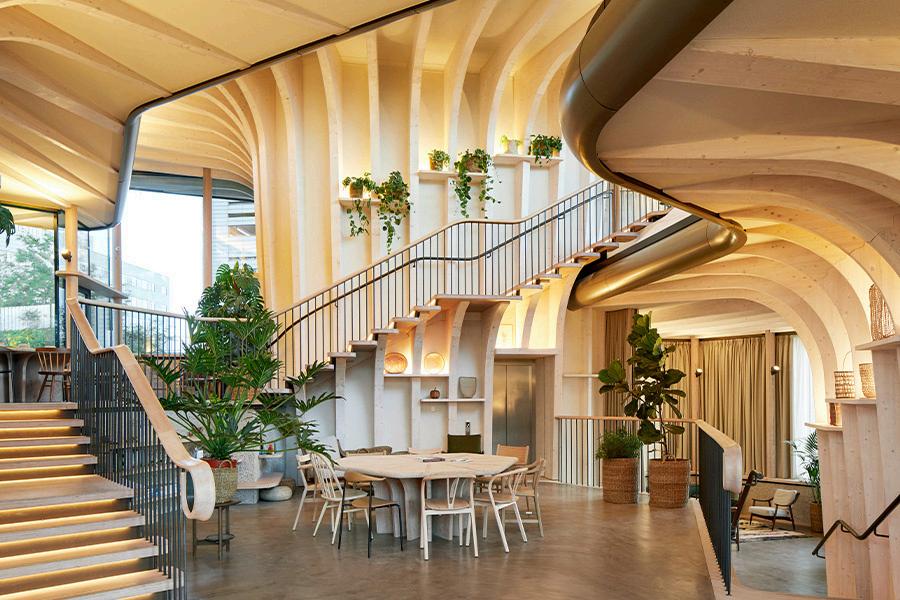
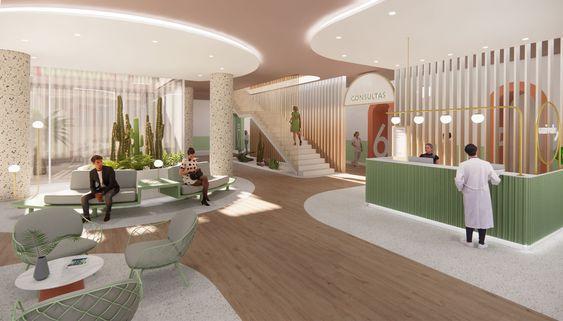
incorporation of nature
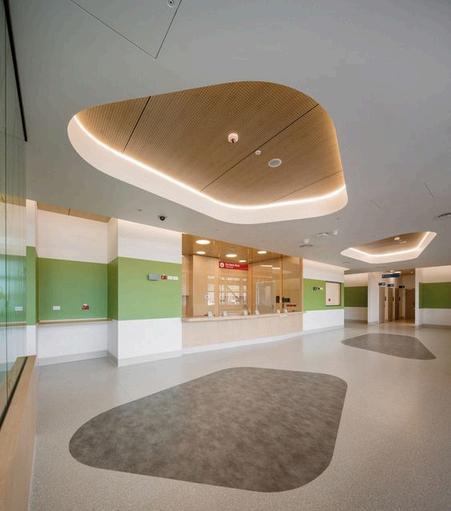
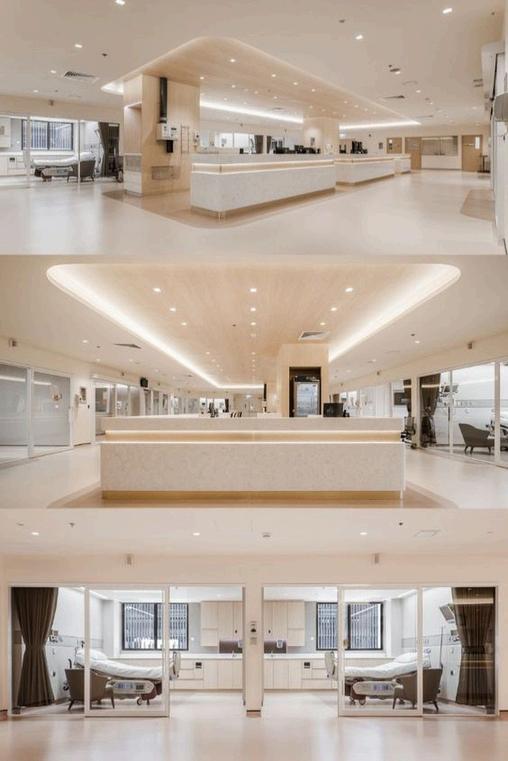
access
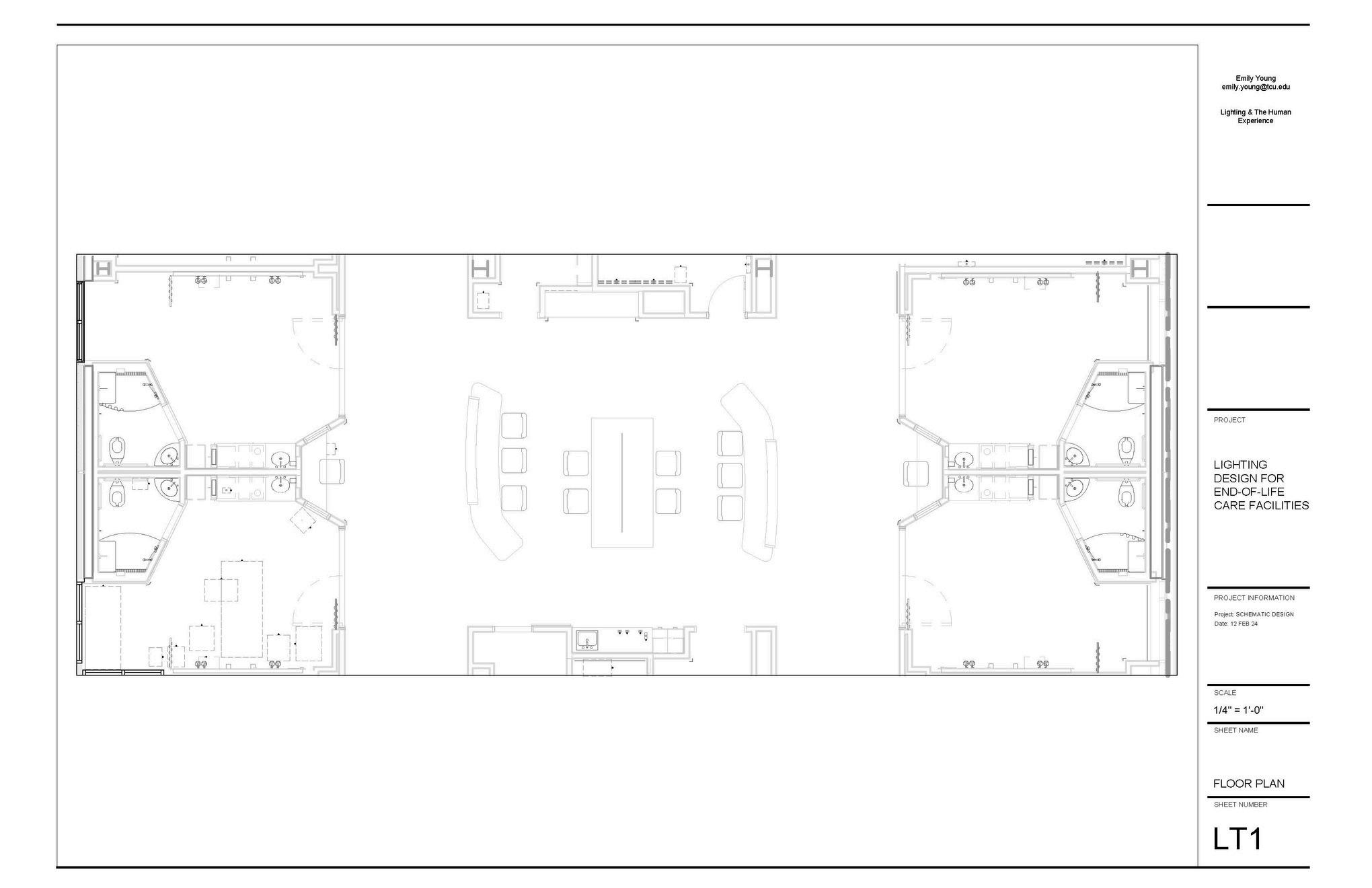

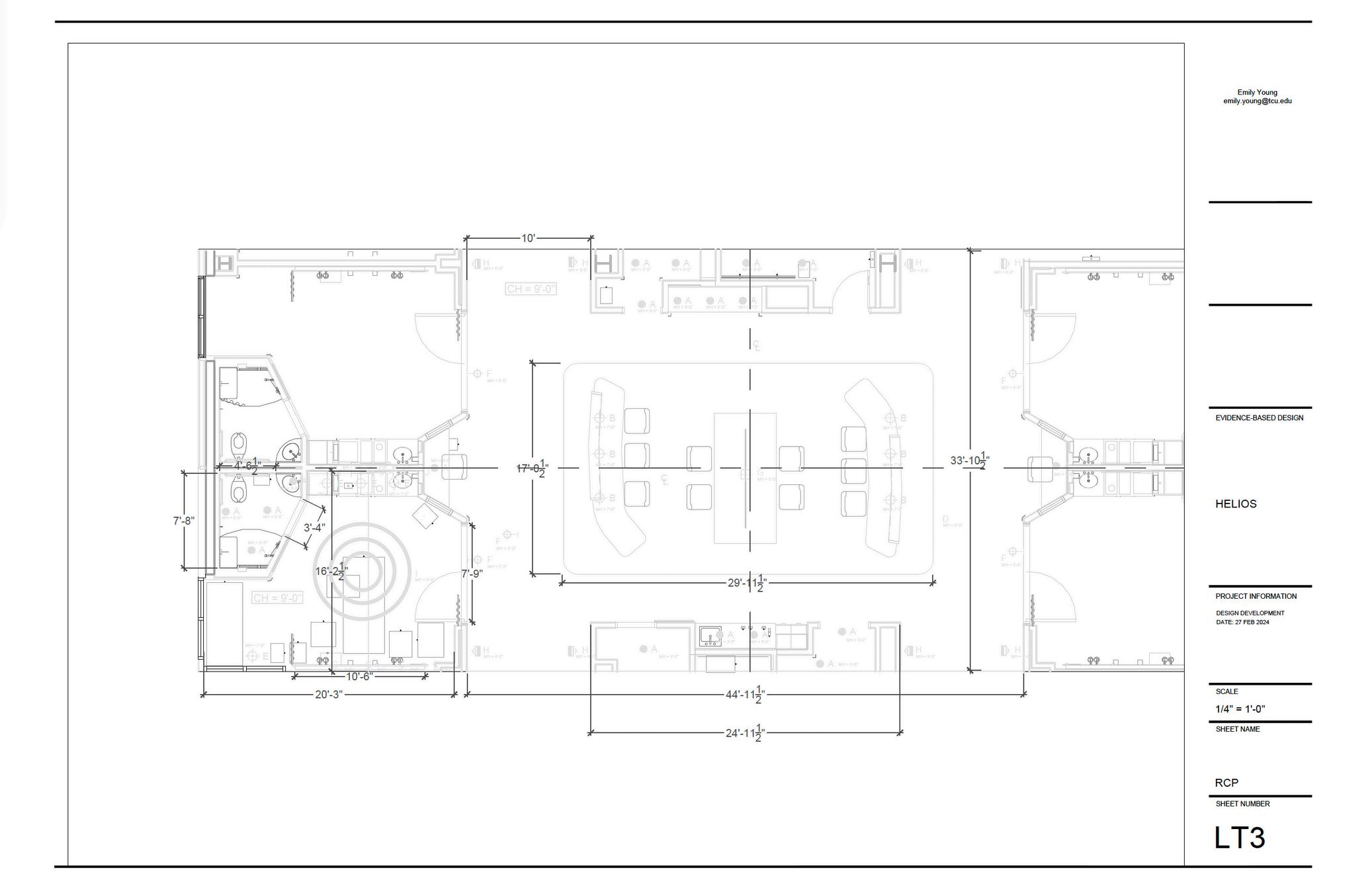
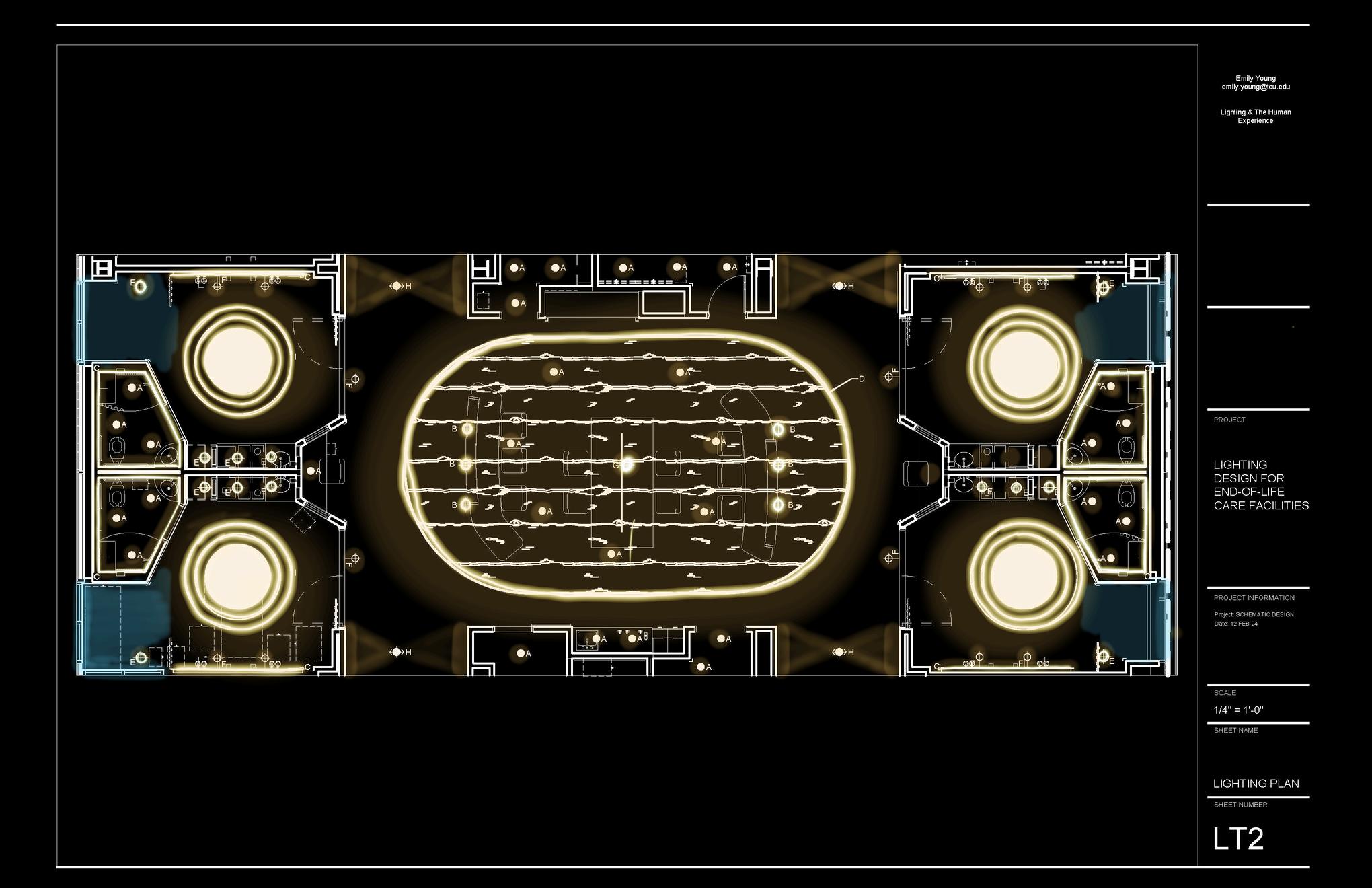
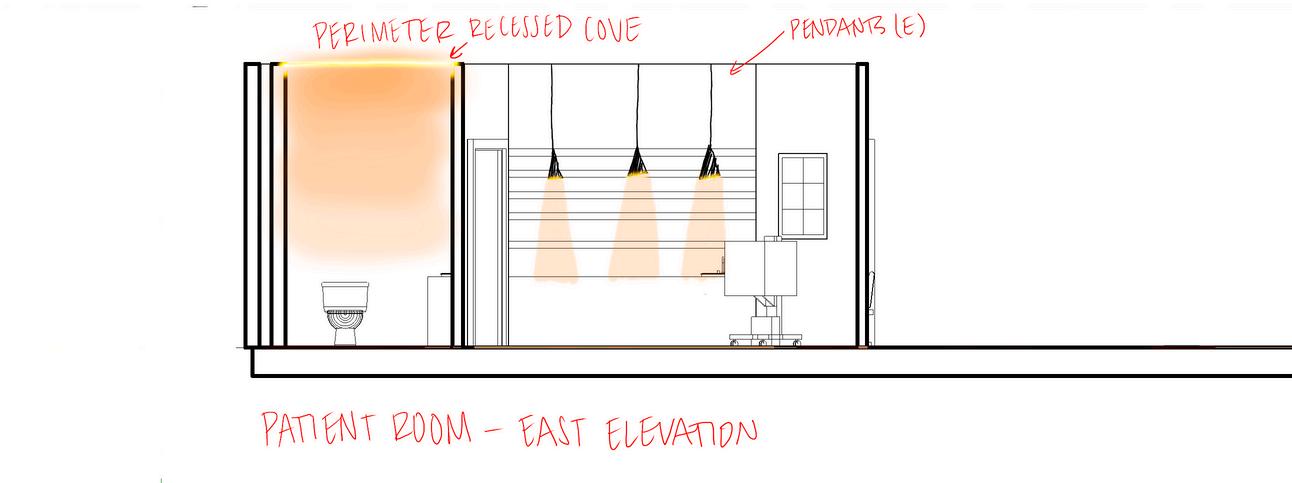
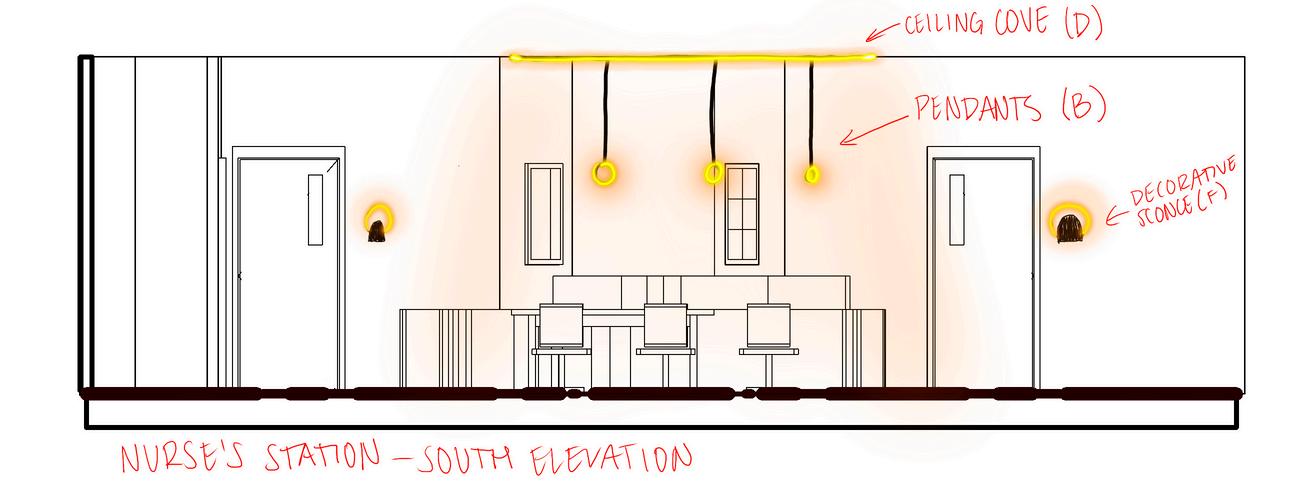

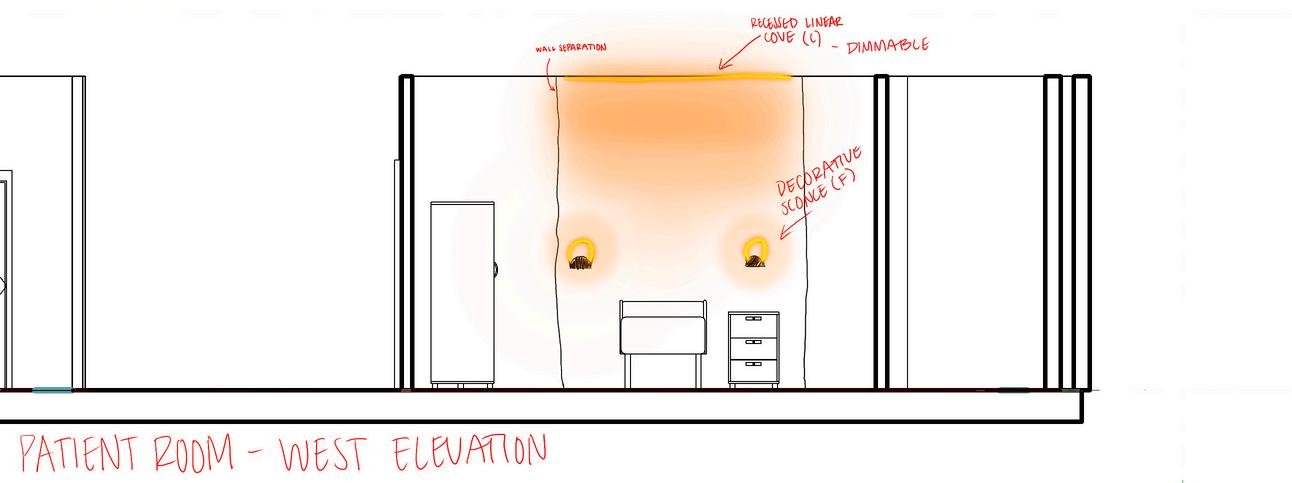

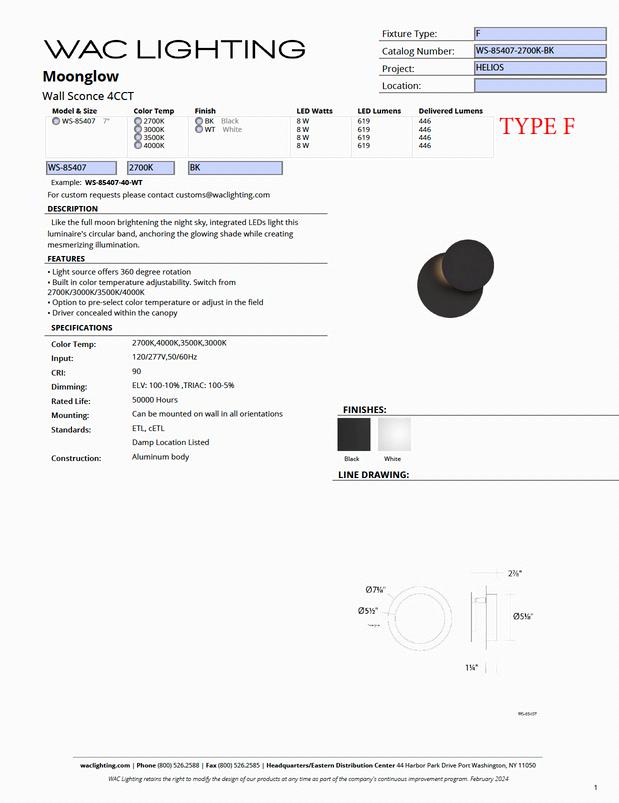


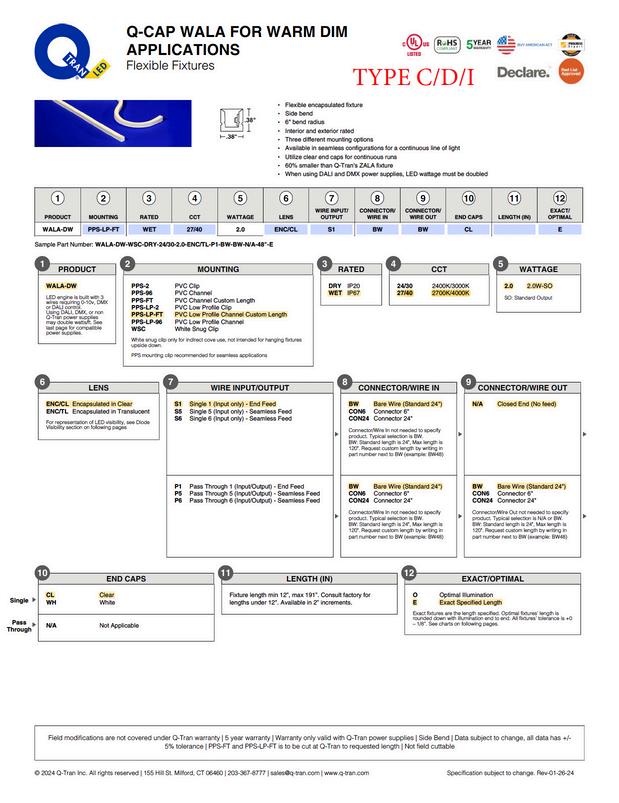
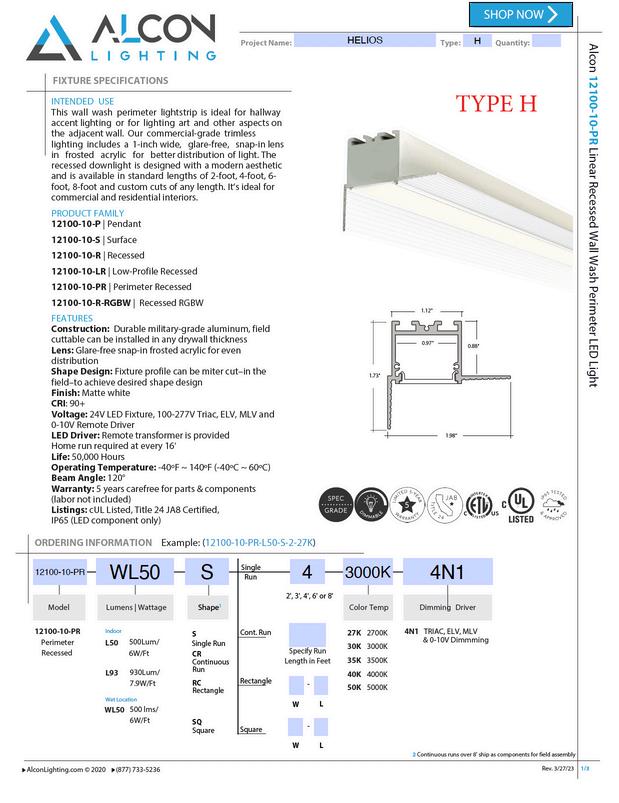

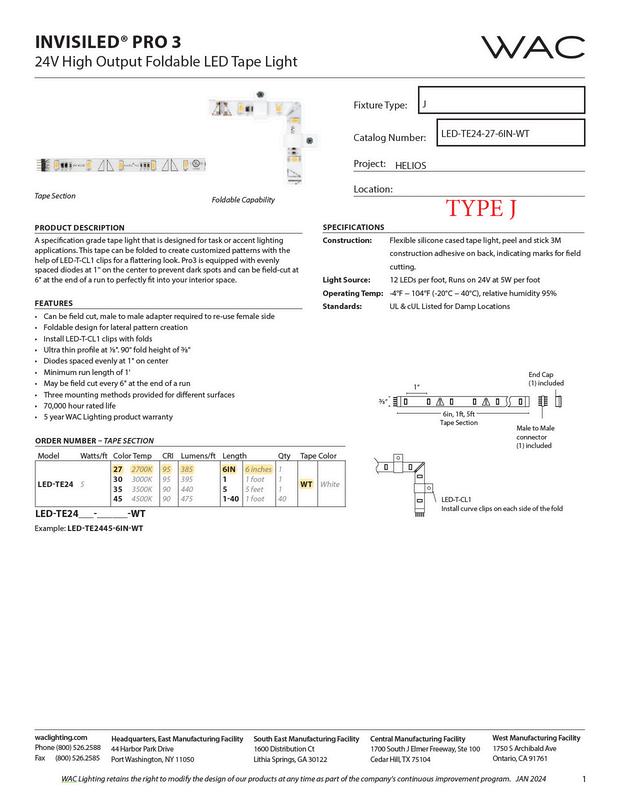
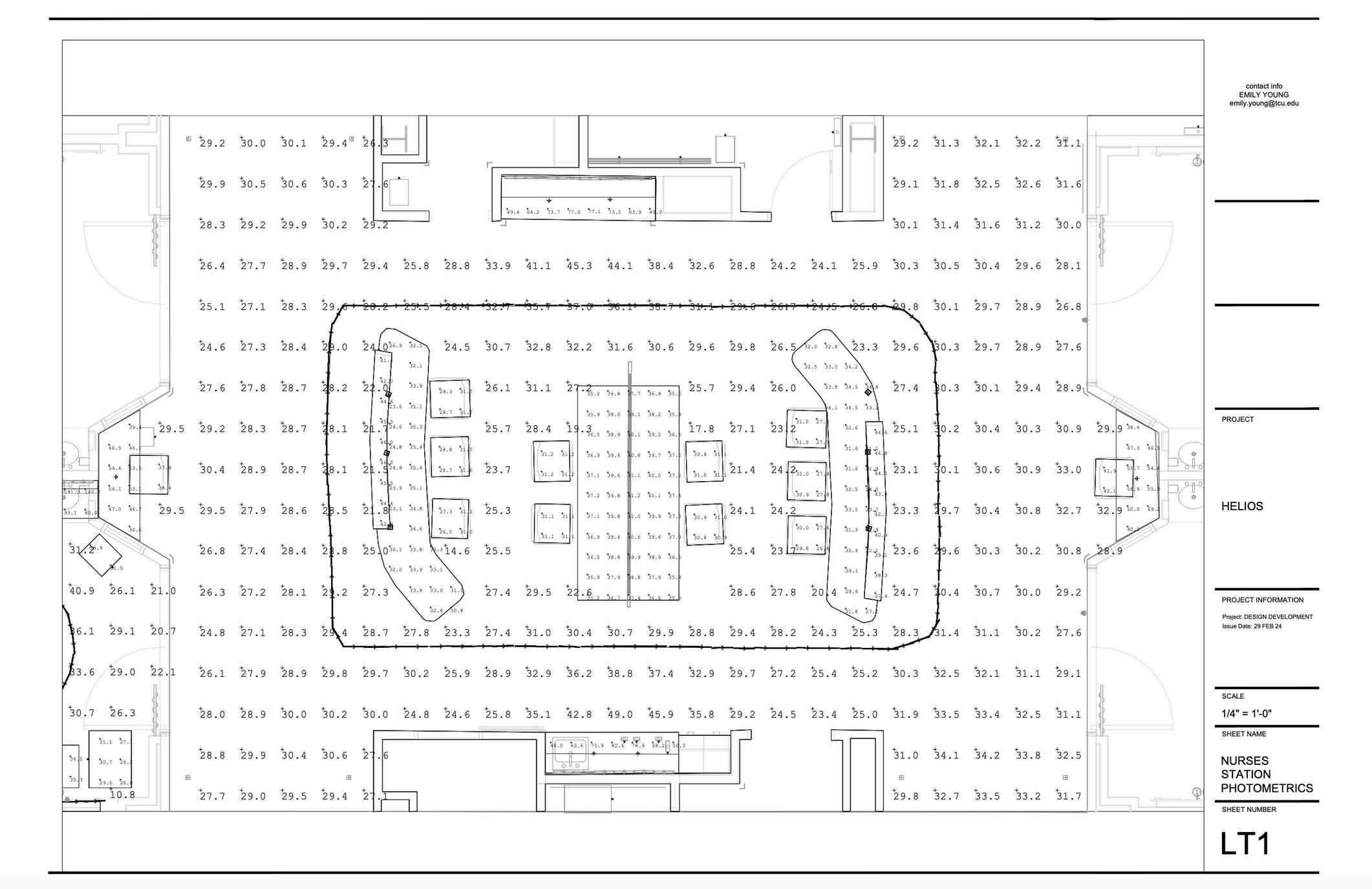
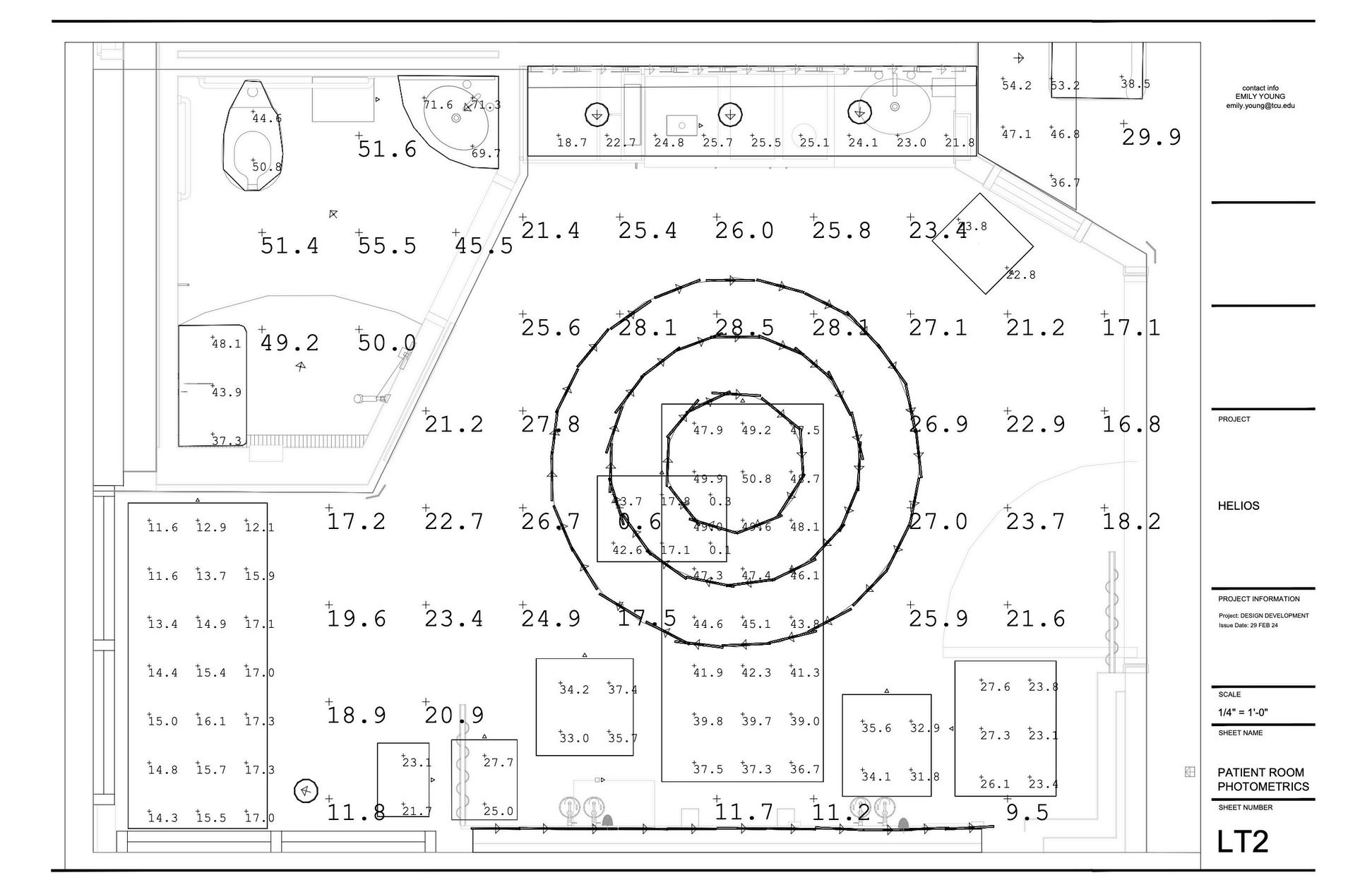
L U M I N A I R E S C H E D U L E

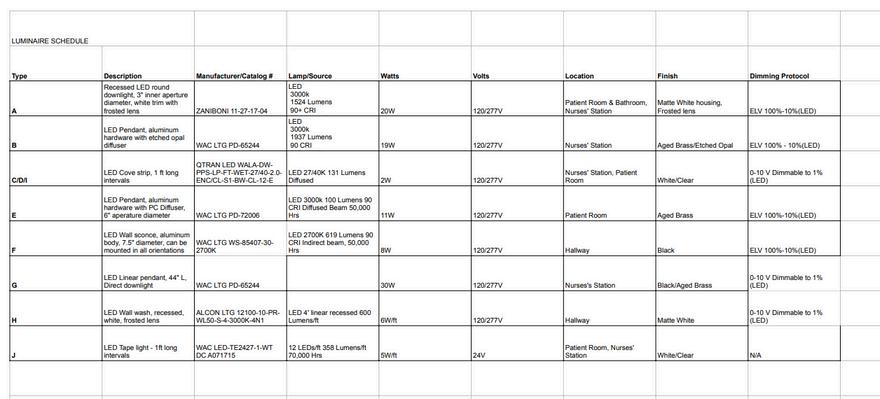

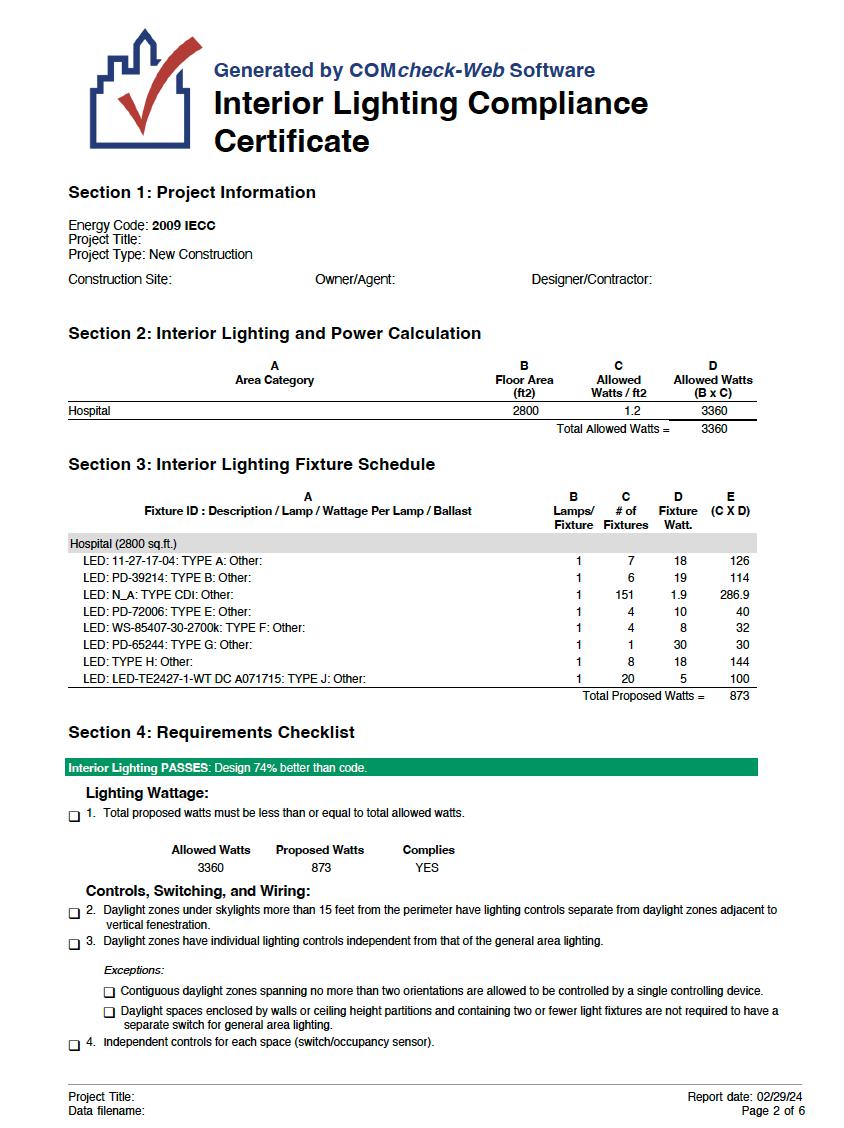
GreshamSmith.“Evidence-BasedDesignPracticesforthePalliativeCareEnvironment.” BuildingDesign+Construction,16June2021,www.bdcnetwork.com/blog/evidencebased-design-practices-palliative-care-environment. “HistoryofHospice.”NHPCO,13July2020,www.nhpco.org/hospice-careoverview/history-ofhospice/#:~:text=1974,federal%20funds%20for%20hospice%20programs. “IESRecommendedLightingLevels.”IESRecommendedLightingLevelsByApplication, www.electricalmarketplace.com/pages/recommended-lighting-levels.Accessed2Nov. 2023.
Kamali,Nehzat,J.,andMohamedY.Abbas.“HealingEnvironment:EnhancingNurses’ PerformancethroughProperLightingDesign.”Procedia,SocialandBehavioralSciences, vol.35,2012,pp.205-212.
MarksFM.LettertotheEditors:LightingforDifferentHealthcareSettings.HERD:Health EnvironmentsResearch&DesignJournal.2013;6(3):166-168. doi:10.1177/193758671300600314
McCunn,LindsayJ.,etal.“LightingControlinPatientRooms:UnderstandingNurses’ PerceptionsofHospitalLightingusingQualitativeMethods.”Herd,col.14,no.2,2021, pp.204-218
Rostenberg,Bill.“QuantifyingHealthcareDesign:BeyondColourandLight:Lightingand ColourforHospitalDesignaReportonanNHSEstates-FundedResearchProject.” BuildingResearchandINformation:TheInternationalJournalofResearch,Development andDemonstration,vol.32,no.6,2004,pp.544-547
SaghaZadeh,Rana,etal.“EnvironmentalDesignforEnd-of-LifeCare:AnIntegrative ReviewonImprovingtheQualityofLifeandManagingSymptomsforPatientsin InstitutionalSettings.”JournalofPainandSymptomManagement,vol.55,no. 3,2018, pp.1018-1034
Sofiana,Yunida,YuliaYulia,andTitiIndahyani."BiophilicDesignasSustainable ApproachforInteriorHospiceCare."IOPConferenceSeries.EarthandEnvironmental Science,vol.794,no.1,2021.ProQuest
Song,Yilin(2015).TheInfluenceofDaylightingontheBehaviorofNursesandFamilities inNeonatalIntensiveCareUnits(NICUS).DoctoralDissertation,TexasA&MUniversity https://hdl.handle.net/1969.1/156515.
“WhatArePalliativeCareandHospiceCare?”NationalInstituteonAging,U.S. DepartmentofHealthandHumanServices,www.nia.nih.gov/health/what-are-palliativecare-and-hospice-care.Accessed2Nov.2023.